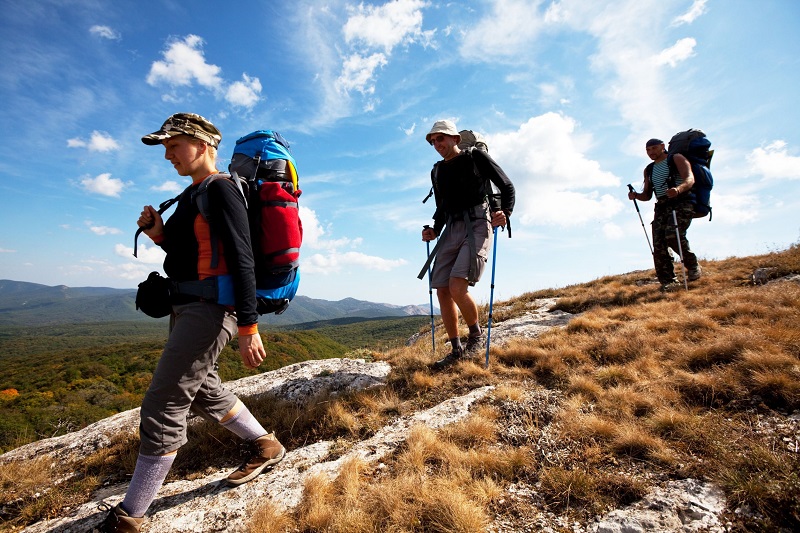The great outdoors is often mistaken to be dreadful and hazardous, but in reality, it really is one of the most enjoyable activities out there.
Ranging from easy to difficult, there are a lot of hiking options for you. But whether you take the less dangerous trail or the ones that will challenge you to your core, you need to plan well for it.
Here are some tips that you can live by when you plan to go hiking:
Share Your Plans
If you decide to hike alone, the best course of action to ensure your safety is that you share your trail plans with those closest to you. These are members of the family or your friends.
It’s important that you let them know how long you plan to hike and what time you plan to return. In case things go south, they can easily alert the authorities about it.
It’s a peace of mind for both parties, so it’s best that you never forget to let them in on your plans.

Test Your Gear
It’s not enough that you have a set of hiking gear with you if you don’t know how to use them or whether they work or not.
Once you get a hold of these essentials, you need to test them at least and see if they are trusty enough to go with you during your hike. From the fire sticks to the clothes and shoes that you will be wearing, up to the very little things that can make your hike easier, all of these should be tested.
You don’t want to find out that some of them are not working once you have already started exploring the trail.
Do Your Research Beforehand
Research is a very fundamental part of an adventure. Whether by land or by sea, you need to be equipped with the right knowledge.
In hiking, there are certain facts that you need to know before you actually start your adventure. Weather forecasts, wildlife sightings, or knowing where the nearest national park station is can improve the overall safety of your hike.
It’s also important that these details shouldn’t be saved on your phone alone. It can be helpful to bring a small notepad or notebook with you where these things are written down just in case you don’t have enough battery pack to last the entire trip.
You can find this information on national park services websites. And with the rise of travel bloggers, you will never run out of options on where to get this information and details.
Use Walking Sticks
Having an extra leg won’t hurt if you plan to hike for longer hours. That’s what walking sticks are for. They are made to help you complete the course with minimal trippings and falling.
Walking sticks are an essential tool to bring when you go hiking, as they can keep you upright, especially during a challenging ascent and descent. They can help you with your balance, so don’t ever think about leaving these sticks behind.
Ditch the Cotton
For a more comfortable hike, quick-dry clothing is best recommended. Save your cotton outfits for some other occasion, as it is not very advisable during harsh weather conditions.
You need to understand that what you wear can set the mood of your hike, whether you like it or not. These are what you will carry on your skin for hours, so you have to make sure that they are comfortable enough until the very last portion of your hike.
There are also instances during the hike where you have no choice but to be soaked, so cotton is not a good option. Go for the breathable ones to ensure a great hiking experience.
Stock Up on Food and Water

How would you survive the trail without enough food and water? Carrying proper trail food will make hiking easier for you.
When you walk for hours, you lose energy. Hiking takes more effort, which means you need more food intake during the entire trip.
Make sure that what you load your bag with is nutritious enough. Protein bars, nuts, jerky, and water are just some examples of food that you can bring with you during the hike.
It’s better to carry more than being left with nothing to eat in the middle of the trek. Be smart about it.
Carry a Repair Kit and First Aid Supplies
When you’re in the middle of the woods with no one to turn to when something’s amiss, all you have is yourself and your gear.
Make sure that you bring a repair kit with you for unforeseen damages in your clothing or your shoes. It will also come in handy during overnight trips where you need to put up a tent. A multi-functioning tool that is perfect for a lot of uses will be your best friend during trips like this.
A first aid kit is also required. It will bring you peace of mind if you know that you have bandages and iodine solution with you for unexpected cuts and injuries.
If you’re on certain medication, make sure to pack them as well.
Mind Your Trail Manners
Just because some parks are out of the vicinity of the crowd and authorities doesn’t mean you are free to do whatever you want; however, you want it to be.
There are other people hiking along with you, and you have to respect them. Trail manners aren’t written on a pile of stone; it’s a natural feeling of respect for your surroundings, including the people and nature.
You have to keep in mind that you are a mere visitor and anything that you leave behind. Be it a pile of trash or some nasty leftovers; it can harm the environment and the wildlife that lives in it.
If you want to be one with nature, well then, it calls for your utmost respect, so you better act accordingly.
